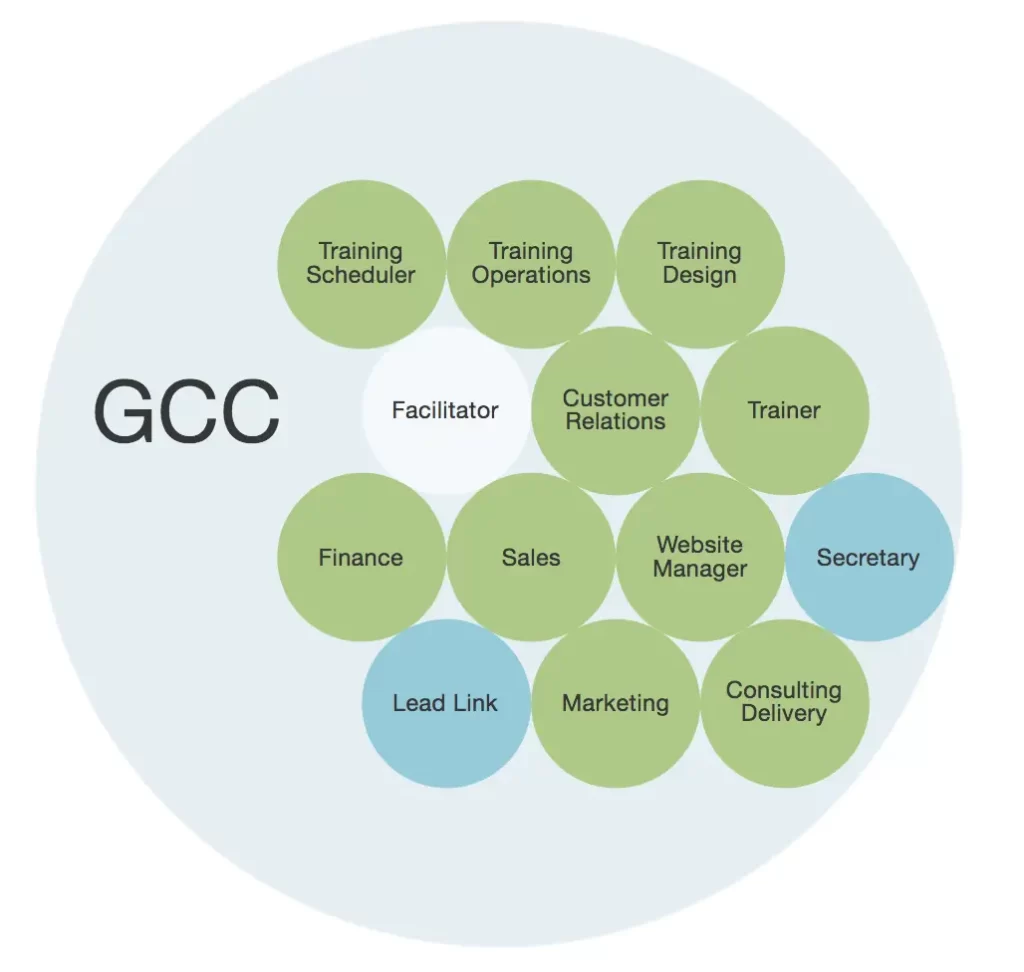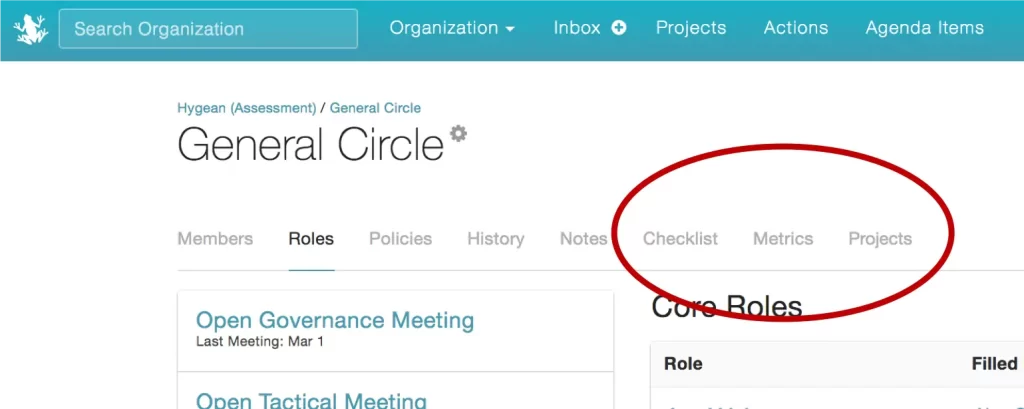A Holacracy Bootstrap Guide
The steps to get you started.
The steps to get you started.

This guide is intended for anyone attempting to adopt the Holacracy practice in their organization with limited support from experts.
Here’s a summary of what you need to do:
Now, before we get into the details, understand that following this guide does not guarantee you’re following the principles or practices of Holacracy correctly. I highly recommend hiring a Licensed Holacracy Providers(LHP) to help you adopt the practice, because it is extraordinarily difficult to do on your own (like trying to fix your hair without a mirror).
This bootstrap guide assumes you’ve had some experience of Holacracy and have already decided it’s for you (if you’re still exploring, then check out this page for a list of upcoming trainings and events).
Usually, you’ll spend far more time and money figuring things out yourself, when a LHP could spare you some of that pain. In fact, I wouldn’t even publish something like this, except for the fact that some DIY adoptions have been successful. So, if you decide to do it on your own hopefully, you’ll be in that minority.
Four general resources which you’ll find extremely valuable are:
OK, first things first. Holacracy is a governance system for an organization, not a group of people. An organization is structured and governed — not the people (for more on this distinction see here). In Holacracy, we define an organization as something that exists beyond the people and that can hold a broader purpose even as the individuals come and go.
So, if you have a legal entity with property (whether physical, monetary, or intellectual) and some activity it performs in the world, then you probably have an organization by Holacracy’s definition.
If you are deploying Holacracy to organize a team or department, or any other group or work, get clear on whether and how your entity meets the criteria defined above. If you don’t have an “organization” by this definition — as may (or may not) be the case for a movement, community, or social group — then there are other tools you may want to consider, as Holacracy is solely for governing “organizations,” not groups of people.
In order to adopt Holacracy as a new power structure for your organization, you must first use the existing seat of power (whatever that may be) to formally adopt Holacracy, thus ceding that power into Holacracy’s “rules of the game.” These rules are formally documented in the Holacracy Constitution, and thus ratifying this document as your governing structure is the first step to practicing Holacracy (I recommend printing up the PDF from the previous link, or purchase a bound copy you can write and keep notes in).
Now, a quick note on the constitution. Trying to adopt Holacracy on your own is only possible because the constitution exists, so you’re really going to have to make friends with it. In a way, Holacracy is the constitution. So, you can always refer to it to get guidance on “Holacracy’s answer” to anything. It’s pretty technical in its language, but not inaccessible. And for things not covered in the constitution, e.g. compensation, hiring, firing, etc. you can always refer to the Holacracy Practitioner’s Guide and the Community of Practice for answers.
The existing seat of power which needs to ratify the constitution will depend on your existing structure, and there may be many viable options depending on the extent you wish to deploy Holacracy. It could be adopted via a formal Board-level resolution or via a CEO policy without a board-level action, or by a manager of a department via the due-authority of that manager, or even via consensus if that’s the current power structure in operation for your organization.
Whichever case applies to your organization, make the adoption of the constitution formal — e.g. capture it in writing, and identify who will act as Lead Link from the individual or group ratifying the Constitution, to the highest-level circle that will practice Holacracy (the “Anchor Circle,” which, when it’s the whole organization adopting, is often called the “General Company Circle.”)
Here are two sample documents you can use as templates for creating one appropriate to your situation:
Note: The Holacracy constitution can be more formally adopted as well in legal bylaws (or equivalent), however you should seek appropriate legal advice before considering such an action (or contact Encode for such advice because they work directly on this issue). At HolacracyOne, we use an LLC Operating Agreement to bind the constitution as our legal operating system and you can see this page for an example of how we did it.
The organization’s governance records hold its overall structure in detail, and can be used to find the expectations and authorities held by each role. If you are practicing Holacracy properly, they will likely be referred to by everyone on a daily or weekly basis. The entire system will be undermined if the governance records are not clear and easy for everyone to access.
You can use a wiki or similar intranet-based solution, however HolacracyOne recommends GlassFrog, a software tool HolacracyOne has tailor-made for the task of streamlining Holacracy adoption, record-keeping, and ongoing practice. You can get a free account, so get one and move on to the next step.
Once you have ratified the Holacracy Constitution and have setup GlassFrog for holding your governance records, you are ready to determine an Initial Structure for your organization (see Article 5.3.1 of the Holacracy Constitution).
Your first circle, or Anchor Circle, has already been defined in the Power Holder Policy or Board Resolution document from Step #2. The Lead Link of that Anchor Circle is now responsible for bootstrapping the rest of the circles.
But before you start practicing, break your organization into an initial circle structure, starting from the Anchor Circle. This should typically be based on the current departments or teams that already exist, not those which you think should exist.

Note: For small organizations (<10 people) or a single team, while you may have many roles, you probably have only one circle; if you think you have more, consider that each “circle” in your vision may actually be a “role” within a single circle.
Holacracy is a living system for evolving your organizational structure over time; thus, this initial structure is just a starting point and will change over time with your practice of Holacracy. Don’t worry about perfecting it up-front — just get something to start from. Once you’ve determined your initial structure, the Lead Link to the Anchor Circle should do the following for each sub-circle beneath the Anchor Circle (if any):
The Lead Link to each circle can schedule the initial governance meeting for their circle, to hold elections for elected roles (you can find an election walk-through here). For the initial meeting, the Lead Link may appoint anyone as Facilitator and Secretary of that meeting; for all future meetings, the elected Facilitator and Secretary will run and schedule the meetings respectively, as specified in the Constitution. The entire process, activities, and outputs of this meeting are defined in the Constitution, Article 3.
Since no one is assigned as Secretary, one of the very first Governance Meeting agenda items will be a Secretary election. This is critical because the Secretary is the role with an accountability for scheduling future Tactical and Governance meetings. So, you’ll want to make sure it’s clear who will be scheduling future meetings before you end your first one (more on this in step #7).

Inside of GlassFrog, you can populate some initial operational items to review during your regular Tactical Meetings. Now, these aren’t necessary to begin, so I hesitate to include them, but it generally helps to have some items there to help everyone get a feel for how these constructs work — just remember they can be changed, deleted, or added to at any time.
Checklist items are recurring actions a role performs (you can read more about checklists here). Any circle member can request checklist items added to the list as long as they are already accountabilities of the role — no new expectations (those are defined through governance). Finally, each role can respond by saying either “check,” meaning you completed it for the previous period, or “no check” if you didn’t. Checklist items are defined in the Holacracy Constitution in Article 4.2.1. To begin, just capture 1–3 different checklist items like, “Client invoices sent,” for a role with an accountability for sending client invoices.
Metrics review is for surfacing any relevant quantitative data which gives us transparency into the heath or success of the circle (think of metrics like the dashboard of a car). Only the role assigned to each metric (metrics are assigned by the Lead Link) may speak, others may only ask clarifying questions about the data. So, no opinions, requests for action, or discussion. Encourage participants to bring any of these to triage. Metrics are define in Holacracy Constitution, Article 4.2.1
In Holacracy, a project is any outcome. Since accountabilities define ongoing actions, projects allow us to get more granular and concrete on tasks with definite end points (you can read more about projects here). This is why we phrase a project as if it was complete. We say, “New Product Launched” rather than “New Product,” to clarify the specific goal. Since self-organization allows us to make project requests of each other, we need more clarity than phrasing like “New Product” provides.
The Secretary of each circle should schedule regular Tactical and Governance Meetings for the circle going forward. A typical frequency is weekly for Tactical Meetings, and biweekly or monthly for Governance Meetings, at least to start. Tactical Meetings are for synchronizing the team and removing constraints to getting work done; the process, activities, and outputs of these meetings are defined in the constitution, Article 4.3.
I hope you find this guide helpful. While Holacracy can dramatically improve clarity and transparency across your organization, team, or department — it ain’t easy. Which is why I highly recommend hiring a Licensed Holacracy Providers(LHP) to help you adopt the practice, or at least seek out support from the free Community of Practice, because while the discipline is difficult, it’s even harder to do on your own.
Read “Introducing the Holacracy Practitioner Guide” to find more articles.
To learn more about self-management, join a community of pioneers and check out our e-courses → Self-Management Accelerator
